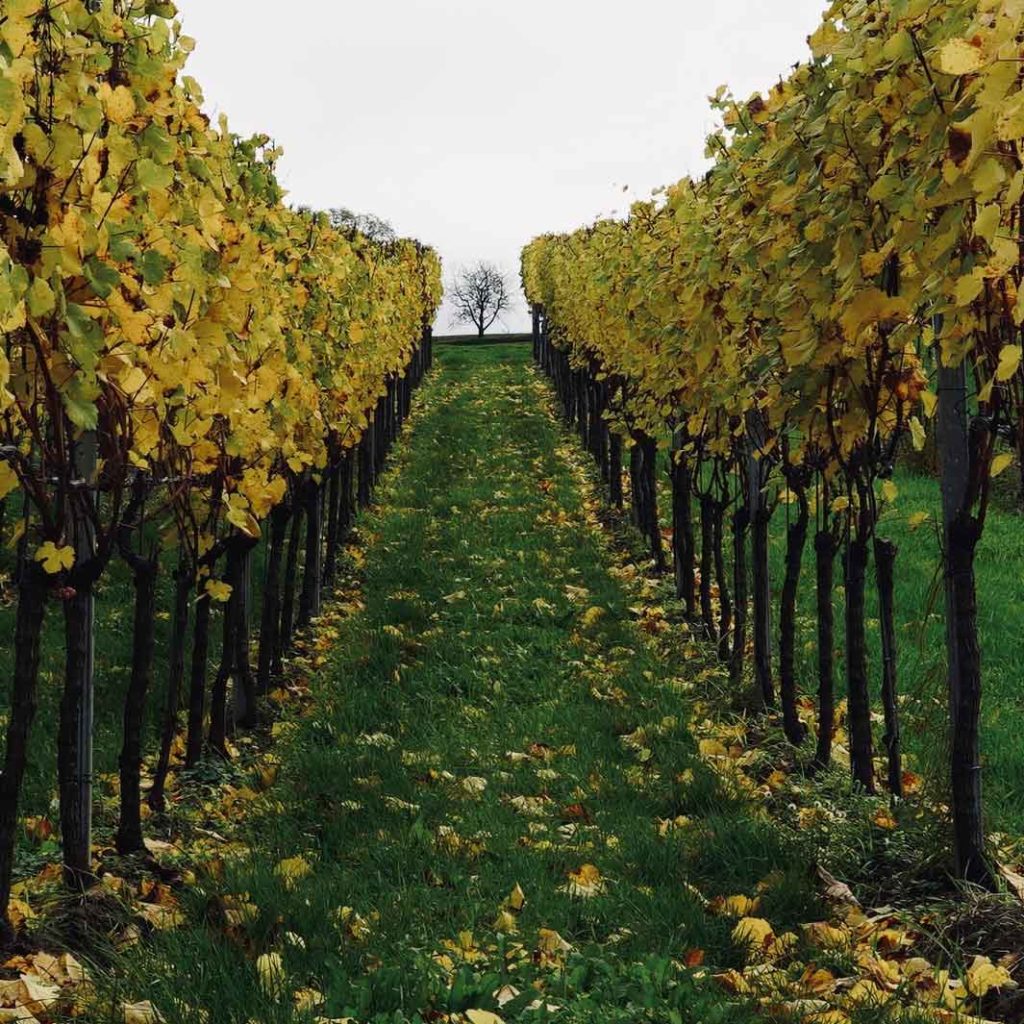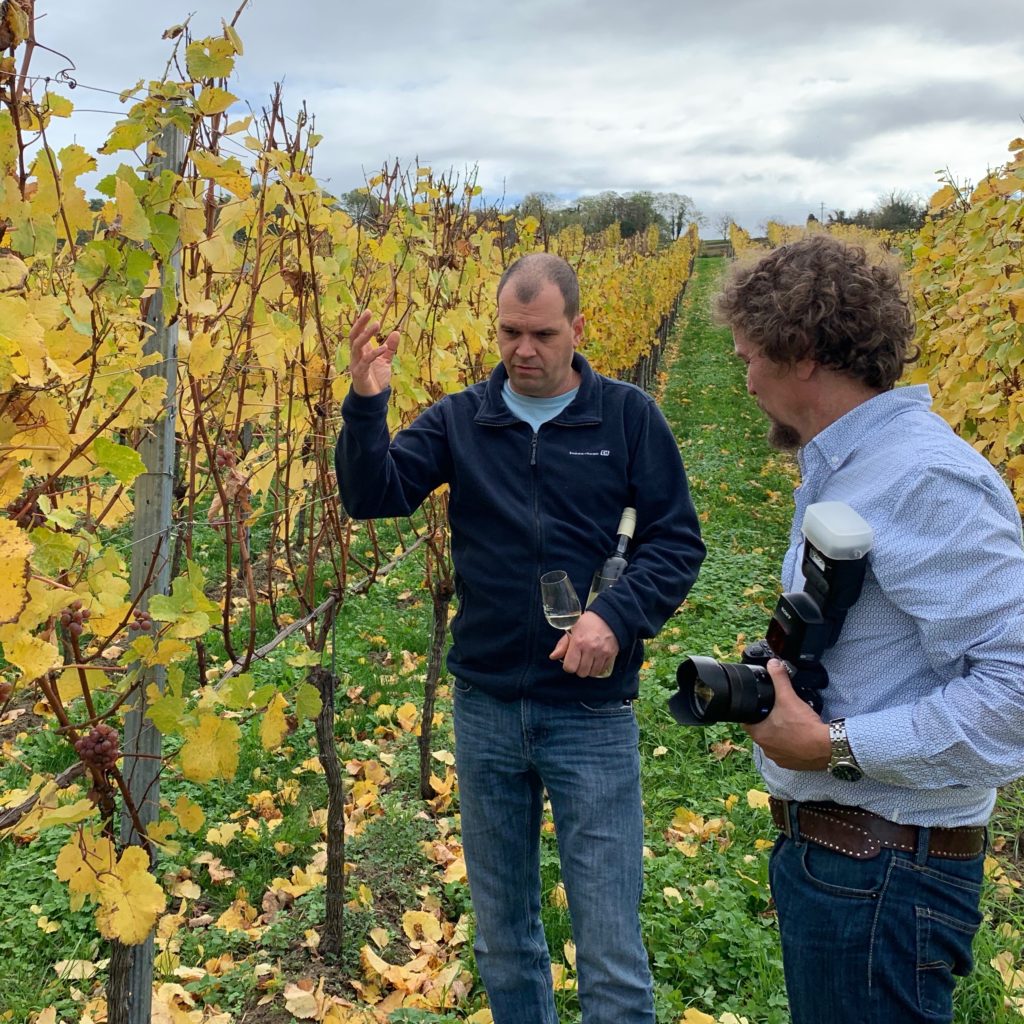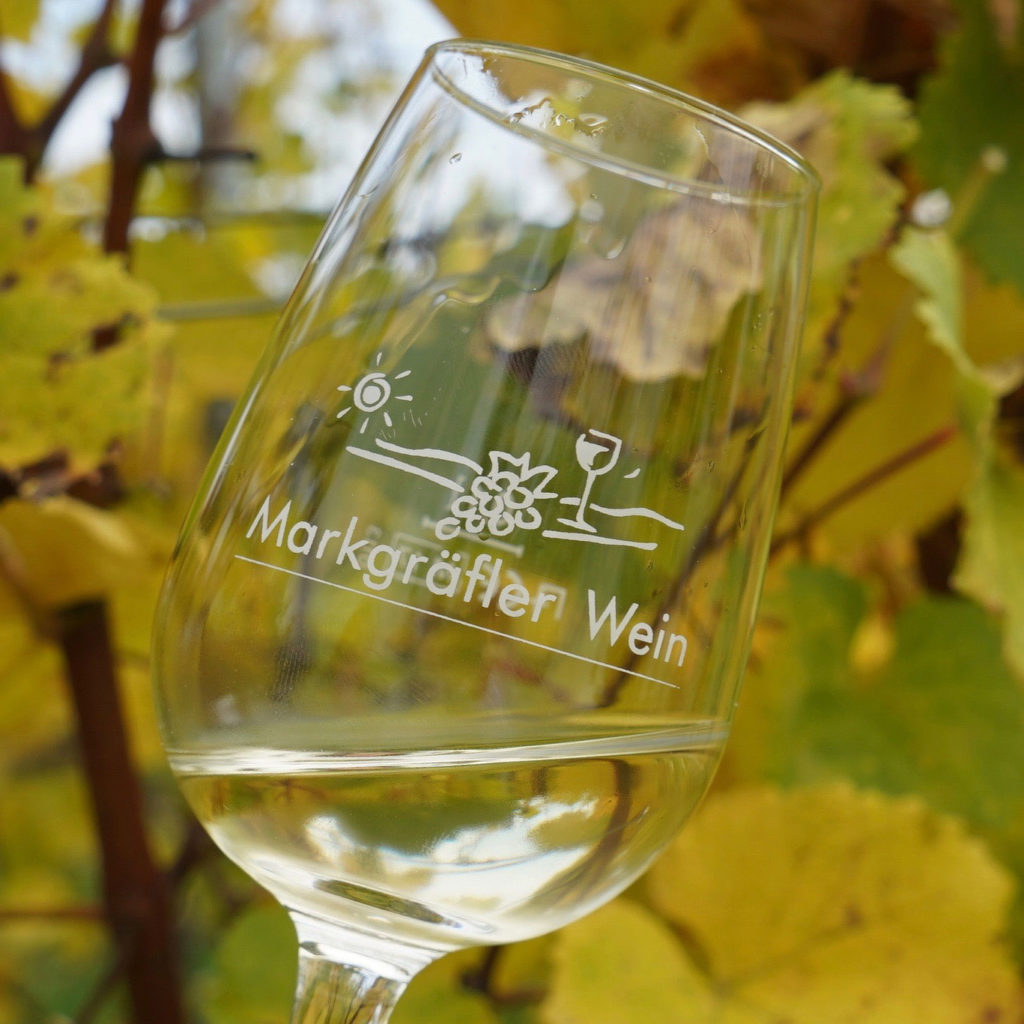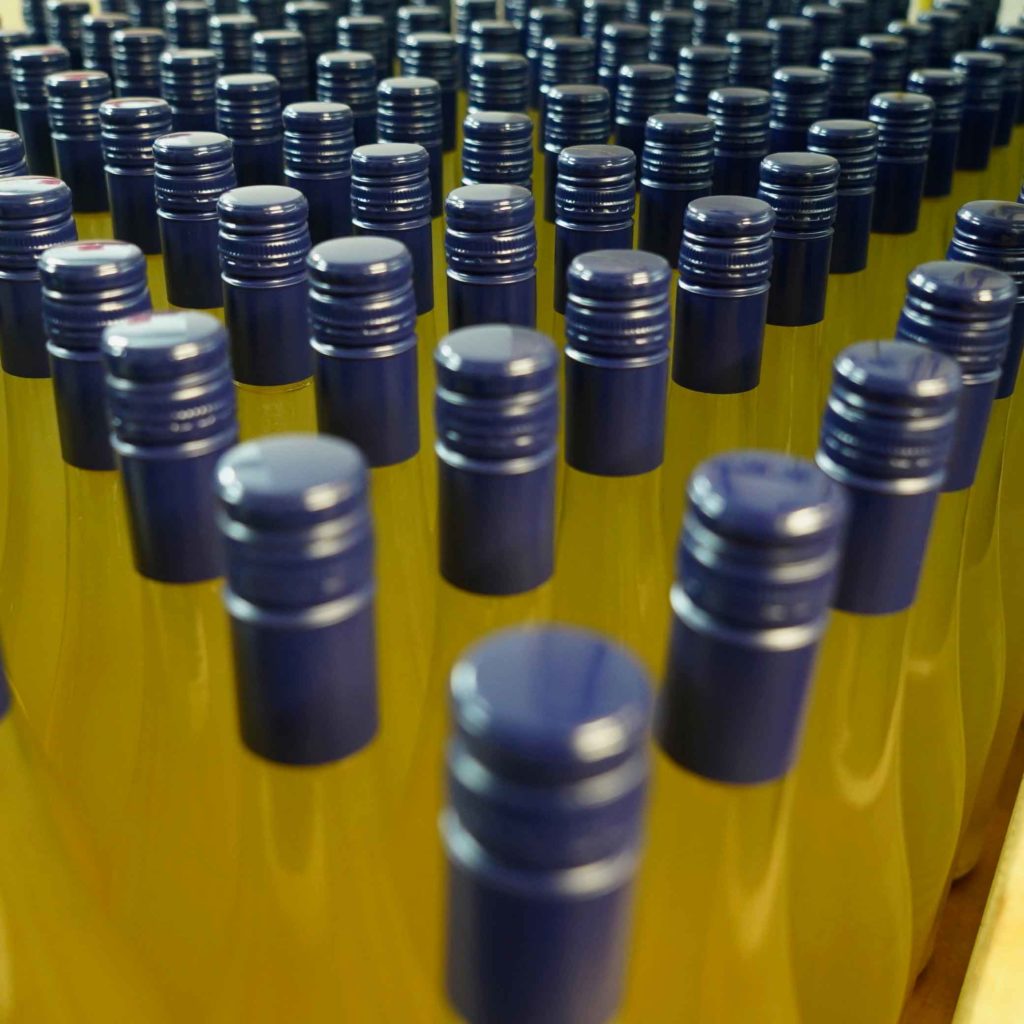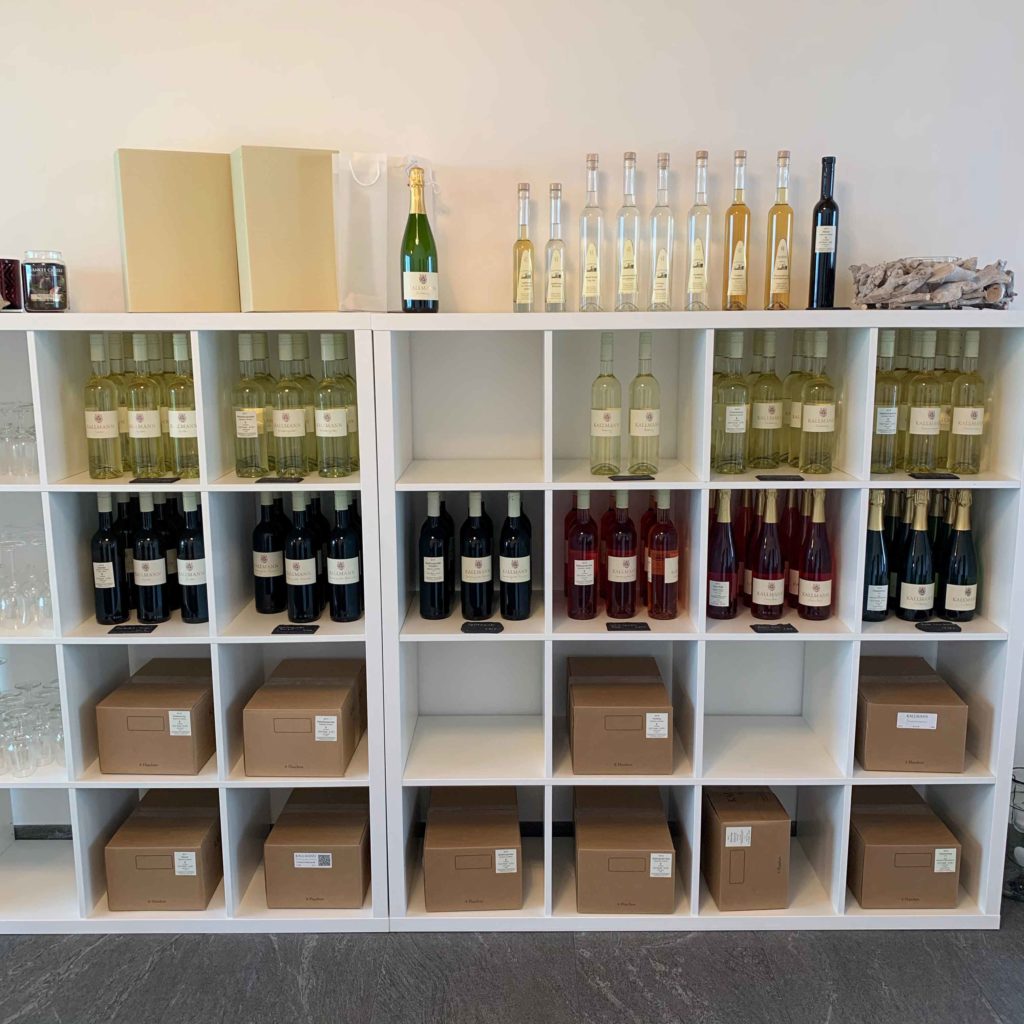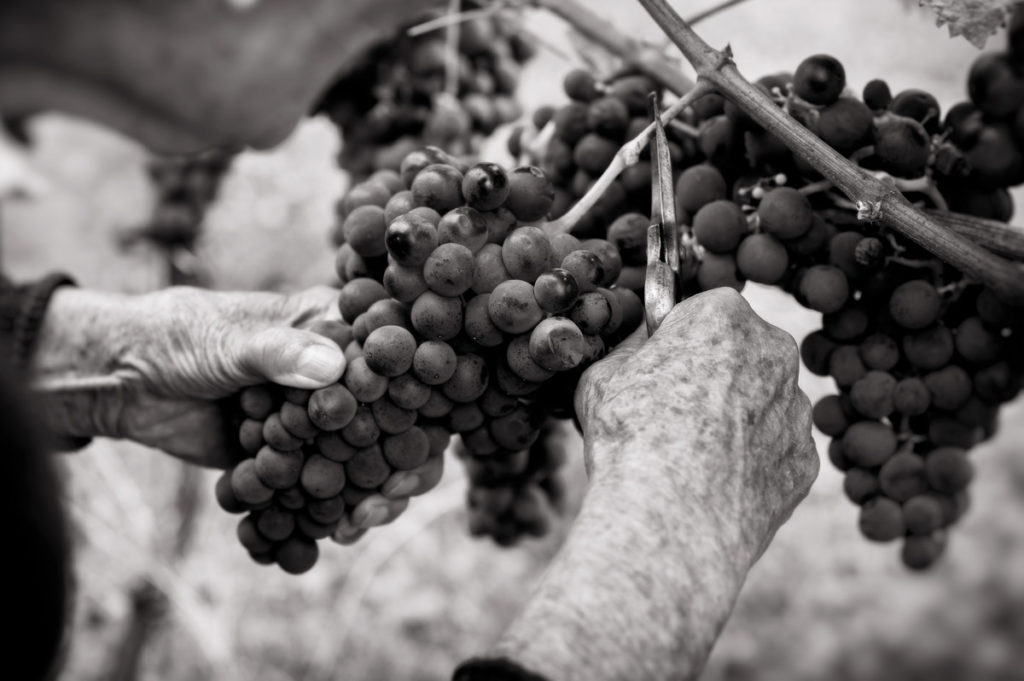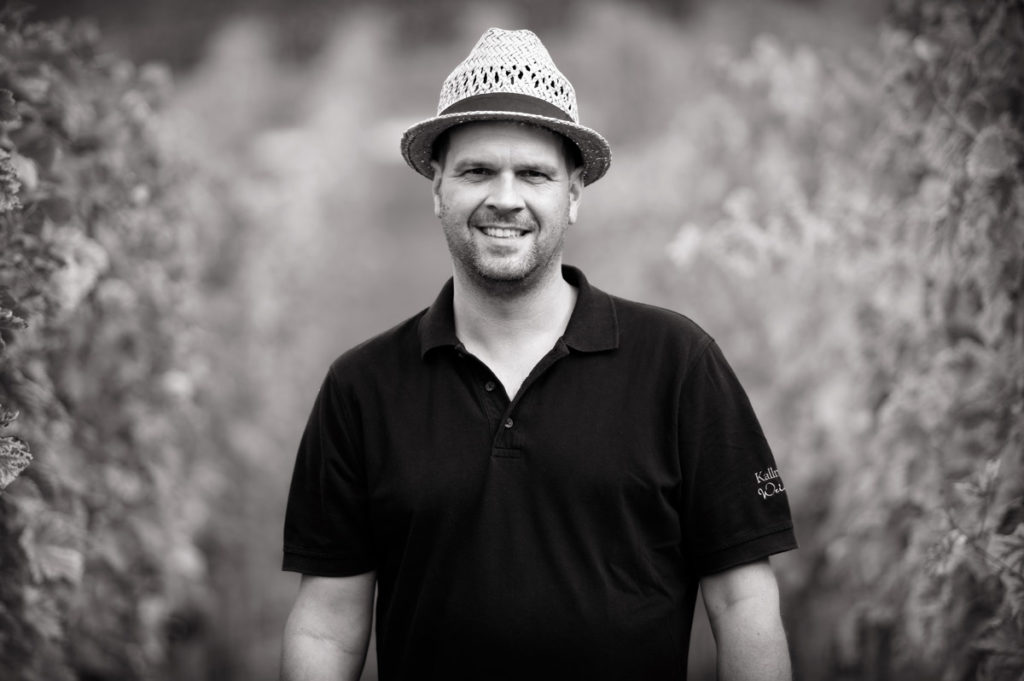With love and lots of manual labour
Kallmann Weinbau
#germany #wines
Boris Kallmann’s vineyard is located in Markgräflerland, a small region in the far south-west of Germany. While historians guess that in this area the Celts who arrived before Christ had already began to plant vines, the production of wine by the Romans has been proven without doubt. Still today about 15% of the arable land surface is used to cultivate vines. Gutedel is in addition to the traditional grape varieties planted in Markfräflerland. It is better known in France and Switzerland as Chasselas, a table and white wine variety. ‘The oldest of our Gutedel vines were planted about 50 years ago by my grandparents,’ tells Boris Kallmann. Following the death of his grandfather in 2004 Boris and his wife decided to keep the land and manage it themselves. A brave step because, ‘At this point in time we knew little about growing vines.’ So to begin with Boris had to do serious studying.
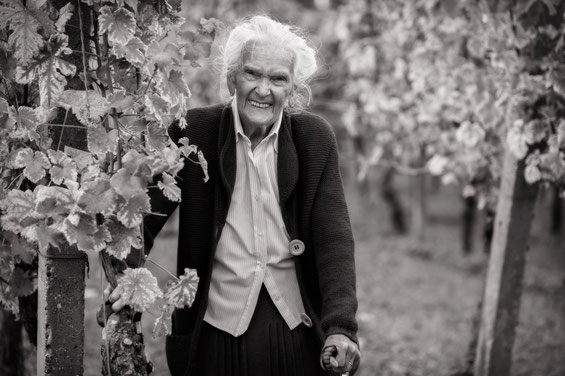
Something to suit every taste
What started out as about 2,000 square meters has grown to become an impressive business. ‘Today we cultivate vines that cover an area of 1.3 hectares.’ This represents a yearly production of about six to seven thousand litres of wine. With the increase of the surface area so too did the variety of vines. At the start Kallmann’s vineyard only grew Gutedel and Spätburgunder (Pinot Noir). Today Chardonnay, Gewürztraminer, Weissburgunder (Pinot Blanc) and Merlot are included varieties of the family run business. Boris puts it in a nutshell, ‘We can please nearly every taste with our products.’ From a light white wine for balmy summer evenings, to sparkling wine for celebrating to full bodied red wine. But also very exotic products are discovered in Kallmanns cellar such as their orange wine. In order to produce this white grapes are fermented complete with stalks and skins and no yeast additives. ‘With orange wine we let nature run free,’ adds Boris. The dark yellow to orange colour and the slight turbidity led to the exotic sounding name.
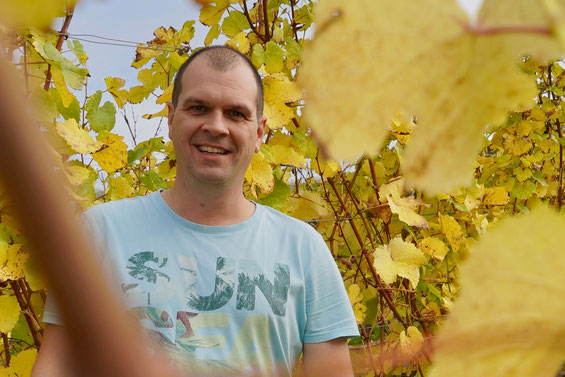
Preferably without chemicals
From the beginning the Kallmanns were sure: ‘We wanted to produce in a sustainable way.’ Therefore in their winery no herbicides are used. Also pesticides are only applied when the chances of an infection through micro-organisms and parasites are high due to unfavourable weather conditions. ‘This leads to nine to ten applications per year,’ reports the winemaker. In comparison to pure bio operations this is a lot less: ‘In this region bio cultivators need to apply 13 to 15 times plant protectors.’ Boris wants to attend courses on producing biological wine in order to learn more about alternative methods yet he does not want to convert fully to bio due to logistical reasons which are currently not possible for him. ‘I work besides the winery as a service technician.’ Therefore Boris is missing the flexibility of time needed to react to weather changes and to treat the plants which are prerequisites for pure biological cultivation.
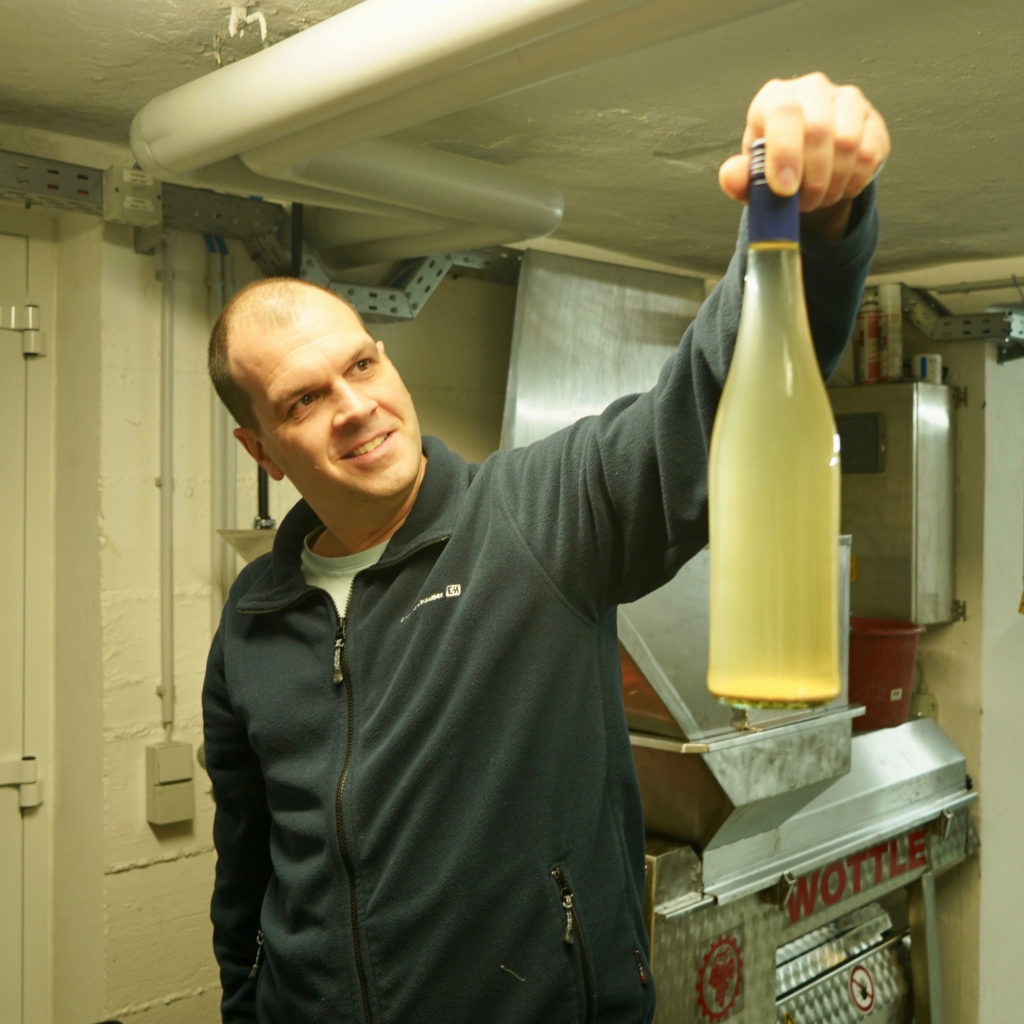
Production happens on site
Due to timing Kallmanns also have to make compromises. ‘In a few parcels of vines we harvest mechanically. The grapes from these vines go directly to our regional co-op. However, the majority of the grapes are hand-picked by the Kallmanns. And the winemaker stresses, ‘For our own wines we use only hand-picked harvested grapes.’ What is collected by friends, acquaintances and relatives during a harvest day is processed that same evening by the Kallmanns. The fresh grape juice is stored in a cooler for a night. ‘During this time the sediments fall to the bottom and so we can gain pure juice without using chemicals,’ explains the expert. After a fermentation phase comes the storage in barrels. As soon as the quality is right Kallmanns fill their bottles in spring in their own cellar.
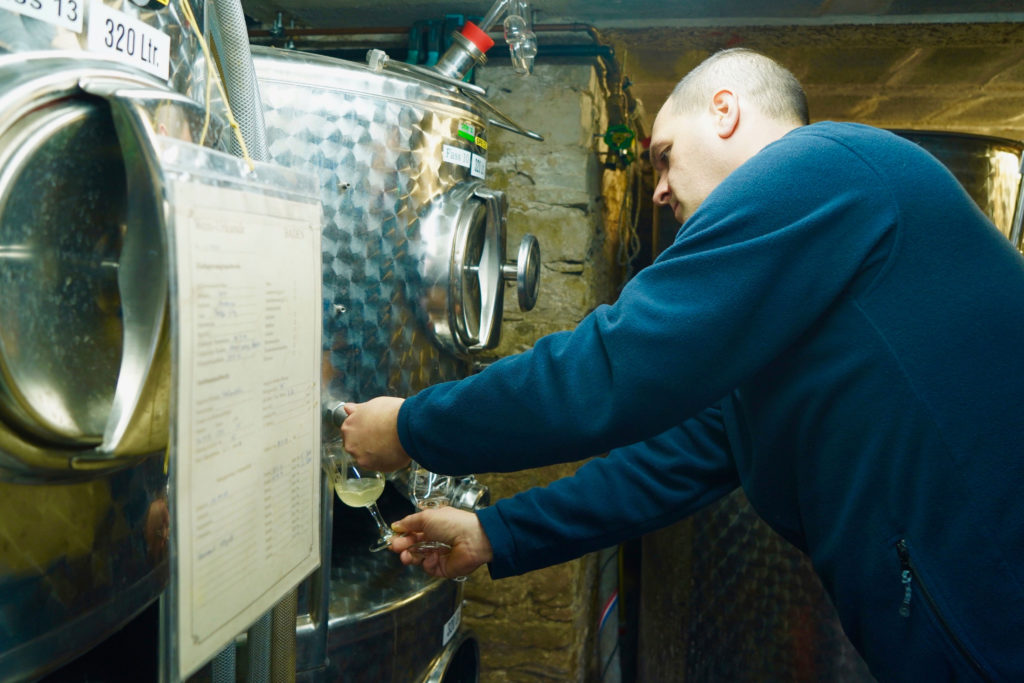
Closer contact to their customers
The wine is very popular ‘At the end of the summer we don’t have anything left from many of our varieties.’ Kallmanns sell their fine wines mostly directly to passers-by, at regional events and more often online. But to buy additional land in order to produce more is not Boris’s plan. He would much rather reduce the amount which is given to the regional co-op in order to produce more wine by hand.
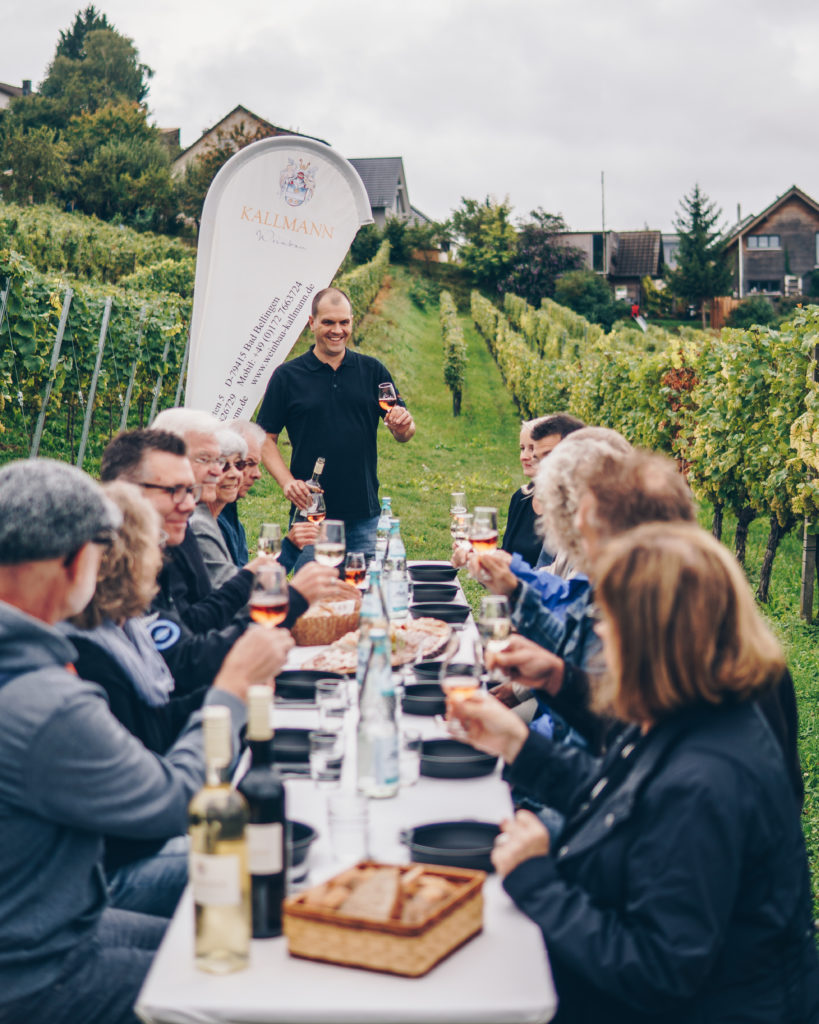
In the meantime Kallmanns offer their customers the option of personalising their own wine labels. ‘Besides the mandatory details you can place a personal inscription,’ tells Boris proudly. Furthermore during the summer months the producer organises vineyard tours during which the participants learn about sustainability in vineyards, wine production and quality factors. To round off these tours a tasting is done right in the centre of the vineyard with a view over the beautiful Markgräflerland.
